Today I’m taking part in a blog hop at the invitation of Patricia Bracewell, author of Shadow on the Crown. Please do see what Pat has had to say about writing the sequel to her debut, The Price of Blood which will form part of a trilogy set in the Viking period. Her post is here.
1 What am I working on?
The working title for my next book, the third of my novels set in the Elizabethan period, is The Queen’s Lady. It will focus on a Lady of the Bedchamber to Elizabeth I and explore her relationship with the queen and a captain who becomes the lady’s lover at a time of national crisis during the threat from the Spanish Armada.
2 How does my work differ from others of its genre?
If I was to pick out one aspect of my novels that sets them apart from other Tudor era fiction it would be well-researched adventure. My stories involve the royal court, as with so many other popular novels of the genre, but they also focus on exploits and adventures away from the heart of power, often in far flung locations. So my first book had Drake’s first successful attack on the Spanish in the Caribbean as its backdrop; my second concerned Raleigh’s ‘Lost Colony’ of Roanoke and the attempt to establish a permanent English colony in the New World. My third will be more intimately involved with the Queen and what went on behind closed doors when she faced the greatest threat to her realm, but the story will also cover the conflict at sea which the Queen never saw, and it will delve deep into her relationships with her ladies as well as the courtiers she loved but could never really get close to physically.
3 Why do I write what I do?
I am captivated by the stories that envelop me as I delve back into the past. The more I find out, the more I want to know, and the more my imagination is fired by voices from history. I find the Elizabethan period particularly fascinating for its larger than life characters and the great achievements of the age. It was our Renaissance, and the emergence of England as a world power; the Age of Discovery, of Shakespeare and a magnificent flowering of the arts; an age of independence with the break from Rome, and a time when people dared to do more and go further than they ever had before. It was brave, bold and courageous, but also often brutal, coarse and bloody. I find writing about it hugely enjoyable.
4 How does my writing process work?
The history provides the framework as with all historical fiction, but the central characters drive the story. It’s by following them through challenges and conflicts that interest is sustained. I like to plan quite carefully before I ever start writing in earnest. I put in months of research, read as many first hand accounts as I can get my hands on, familiarise myself with the principal historical texts, go to the sites, explore buildings, galleries and museums, and do as much as I can to be sure of the background. Quite early on I’ll plan out a detailed outline of the story as well as the historical facts on which it’s based. The outline will be refined during the course of writing the novel, but I always know in essence where the story is going, what motivates my characters, where they’re coming from and where they’ll end up.
I write in episodes, and I like to imagine each episode fully in my head before I begin to jot it down. Walking the dog usually helps at this stage. While I’m scrambling over the Dorset countryside I’ll hear my characters talking, and I’ll visualise where they are, imagine what’s going through their minds, and be aware of the details as if watching a film involving all the senses. Then I’ll start to write, and often the dialogue will come first because I find the voices manifest most easily. Once done, I’ll flesh out and refine, going over my work again and again until I’ve got the scene right. Then I’ll bolt it onto the previous scene, and this process may well involve rereading and refining that too, but always I’ll have an overall idea of what I’m aiming for and, of course, my outline to refer back to.
Most scenes begin with yet more research, often on a much more detailed level, to do with the minutiae of daily life at the time. So if my characters are out riding, I’ll want to know what they would have been wearing, how many servants, if any, would have been expected to accompany them, what kind of horses would they have been riding and what would their saddles have been like. That kind of information is all potentially important to building up a convincing picture. Though most of it won’t be used, I still feel I should know as much as might be relevant. Sometimes I’m seized with an urge to see something that’s crucial to a scene or do some extra research that takes me out and about. I might want to go and visit an old palace, or look at the vista from a cliff top,or speak to an expert about some aspect of the history. Whatever I feel I need to do, I’ll do it and then I’ll get back to the writing. The process is complex and intense and solitary in the main; I’m probably not very good company throughout most of it!
Now may I introduce the three excellent writers who’ll be joining this blog hop on April 21.
Jean Fullerton was born and raised within the sound of Bow Bell’s in East London where she has spent her 20 years working-life as district nurse. She has been writing for just over ten years and is passionate about historical accuracy and enjoys the research almost as much as weaving the story. She is published by Orion Fiction and all her novels are set in East London. Her first four books were set in the Victorian period; however, for her latest two, Call Nurse Millie and All Change for Nurse Millie, Jean has jumped forward a hundred years to post-war East London. She is currently working on her third post-war nurse novel. Read her post at www.jeanfullerton.com
Charlotte Betts is the author of The Spice Merchant’s Wife and The Apothecary’s Daughter amongst other books. Always a bookworm, Charlotte is an award-winning author of historical novels who discovered her passion for writing after her three children and two step-children had grown up. She lives with her husband in a cottage in the woods on the borders of Hampshire and Berkshire. Read her post at www.charlottebetts.com
Helena Fairfax writes sweet, engaging contemporary romances, with happy endings that leave readers smiling like idiots. She is the author of The Silk Romance and The Antique Love. Read her post at www.helenafairfax.com
For more pieces on this theme you can follow #mywritingprocess on Twitter
2 Comments
Trackbacks/Pingbacks
- My Writing Process – Blog Tour | Helena Fairfax - [...] Last week author friend Jenny Barden invited me to describe my writing process as part of a writers’ blog…

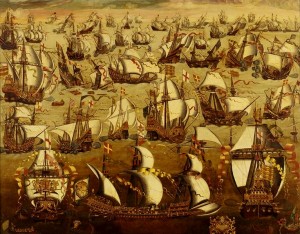
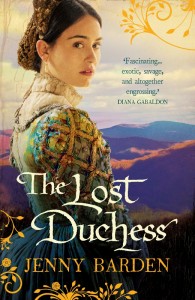
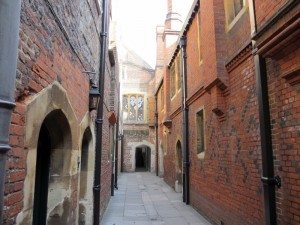
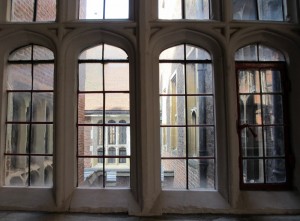
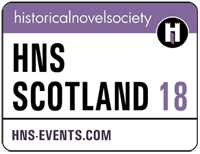

I have so enjoyed your perspective on the Elizabethan era. So often novels involve only court intrigue, but the real action during this time was often elsewhere, on the high seas. Can’t wait for the next book!
Thank you, Eileen. You’re so right. I do think a lot of current historical fiction about the Tudors tends to be slewed disproportionately towards what went on at court. It’s interesting, of course, but the pivotal events often took place elsewhere. I’ll do my best to crack on with the next one!